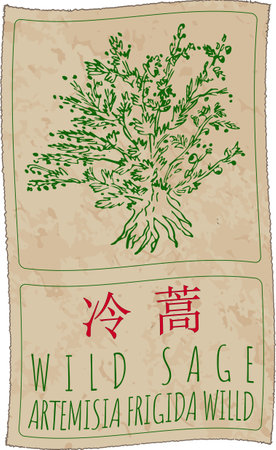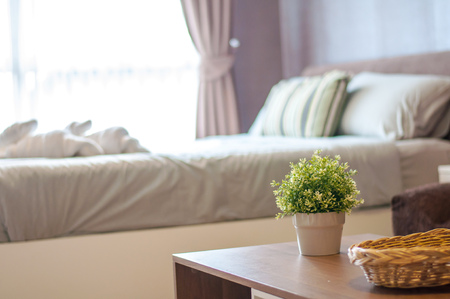Introduction to the Bagua Map and its Relevance in British Homes
The Bagua Map, an essential tool in Feng Shui practice, offers a fascinating intersection between Eastern philosophy and Western interior design. Originating from ancient Chinese traditions, the Bagua Map divides any living space into nine distinct zones, each representing a different aspect of life, such as wealth, health, career, and most notably for this discussion, love and relationships. While the principles of Feng Shui are rooted in the harmonious flow of energy or “chi,” its adaptability means it can be thoughtfully woven into both traditional British cottages and sleek contemporary flats. The British appreciation for history, craftsmanship, and layered interiors aligns beautifully with the mindful placement advocated by the Bagua Map. By understanding the map’s origins and fundamental concepts, homeowners across the UK can begin to see their spaces not just as shelters, but as dynamic environments that support well-being and deepen personal connections. Whether you live in a Georgian townhouse in Bath or a modern apartment in Manchester, integrating the Bagua Map into your home can offer a fresh perspective on enhancing comfort and fostering meaningful relationships within quintessentially British surroundings.
Identifying the Love and Relationship Corner in Your Home
The Bagua Map, a fundamental tool in Feng Shui, divides your living space into nine key zones, each representing an important aspect of life. The Love and Relationship corner is traditionally located at the farthest right-hand corner from your front door when you stand facing into your home’s main entrance. This principle remains consistent, but navigating unique British home layouts requires a bit of adaptation.
Applying the Bagua Map to British Home Layouts
British properties often feature distinctive architectural styles, such as terraced houses, semi-detached homes, and classic Victorian layouts. Each presents its own spatial challenges and opportunities for identifying the relationship corner.
| Home Style | Typical Entry Placement | Love & Relationship Corner Location |
|---|---|---|
| Terrace House | Front door opens directly into lounge or hallway | Back right-hand corner of ground floor (often part of kitchen or dining area) |
| Semi-Detached | Side or front entry, sometimes with central hallway | Farthest right rear room or section from the main entrance (may be living room or garden access point) |
| Victorian Home | Front door leads to corridor with rooms branching off | Rightmost room at the back of the house on the ground floor (frequently the dining or family room) |
Tips for Tricky Layouts
- L-shaped Homes: Extend an imaginary line to create a complete square or rectangle before applying the Bagua Map.
- Multiple Storeys: Begin by mapping the ground floor; upper floors can be mapped individually using their own entrances (e.g., staircases).
- Main Door Not Used Regularly: Always orient the Bagua Map from the main architectural entrance, not side doors or garden entries.
Navigating Unusual Spaces
If your love and relationship corner falls in an awkward area—such as a utility room or under-stairs cupboard—focus your enhancements on the nearest suitable adjacent space, like a corner of your kitchen or lounge. Remember, intention and mindful placement matter just as much as precise positioning when adapting Feng Shui principles to uniquely British homes.

Adapting Feng Shui Principles for British Aesthetics
Bringing the Bagua Map and its relationship-enhancing energies into a British home requires thoughtful consideration of local style, heritage, and materials. When blending Feng Shui with classic or modern British décor, it’s essential to respect both the traditional wisdom of energy flow and the distinctive charm that defines British interiors. Start by mapping out your home’s southwest corner – traditionally linked to love and partnership in Feng Shui – and consider how it can be elevated using elements that resonate with UK sensibilities.
Integrating Local Materials and Craftsmanship
Opt for furnishings and accessories crafted from locally sourced woods such as oak, ash, or walnut, which offer a grounding energy while supporting sustainable British artisanship. Incorporate ceramics, textiles, or artwork from regional makers to infuse the space with authenticity. Natural wool throws in soft hues, hand-thrown pottery, or bespoke lampshades not only enhance tactile comfort but also reflect a sense of place.
Heritage Elements in Modern Harmony
British homes often feature architectural details like cornices, fireplaces, or panelled walls. Instead of masking these features, highlight them within your Bagua-inspired design. Place pairs of candlesticks on a mantelpiece or twin armchairs by a bay window to symbolise harmony and togetherness. For modern flats or period properties alike, blending vintage finds – such as an antique mirror or framed botanical prints – with contemporary pieces maintains balance and visual interest.
Distinctive Design Sensibilities
Channel the understated elegance of British interiors by choosing a palette of muted pinks, dusky reds, or gentle earth tones for your love corner. These colours subtly reinforce the Fire and Earth elements without overwhelming the room’s ambiance. Layer textures like linen cushions, velvet upholstery, or woven baskets to evoke warmth and intimacy. Remember, the key lies in creating a space that feels inviting and personal while quietly supporting positive relationship energy through thoughtful placement and meaningful objects.
4. Practical Enhancements for Love and Relationship Corners
Transforming the love and relationship corner in your British home can be both a delightful and meaningful process. By infusing this area with intention, you can cultivate a warm, harmonious energy that reflects both Feng Shui principles and your personal taste. Below are some actionable steps to help you enhance this special space using colour palettes, artwork, symbolic items, and beloved British décor traditions.
Colour Choices: Creating Harmony Through Hues
The Bagua map identifies pinks, reds, and whites as the ideal colours to activate love energy. In a British context, these tones can be introduced subtly through soft furnishings or accent walls to blend seamlessly with classic or contemporary interiors. Consider blush velvet cushions on a Chesterfield sofa, or soft white throws layered on an antique armchair. The table below offers guidance for incorporating these colours:
| Colour | Meaning | How to Use in British Homes |
|---|---|---|
| Pink | Romance, tenderness | Floral arrangements, ceramic vases, scatter cushions |
| Red | Passion, vitality | Artwork accents, lampshades, traditional wool rugs |
| White/Cream | Purity, clarity | Lace curtains, porcelain figurines, painted woodwork |
Artwork: Expressing Love Through Visual Stories
Select artwork that symbolises partnership and affection—think paired birds by a local artist or romantic landscapes featuring beloved British scenes such as the Lake District or Cotswolds. Hang pieces in pairs whenever possible to reinforce the idea of togetherness. Avoid solitary figures or harsh imagery that may disrupt the gentle energy you’re creating.
Symbolic Décor: Infusing Meaning with British Flair
The placement of symbolic objects is central to energising the love corner. Some quintessentially British items that work beautifully include:
- Ceramics: Display fine bone china teacups or pottery from local artisans in pairs.
- Antiques: Choose vintage photo frames with family portraits or cherished couples from your ancestry.
- Botanicals: Fresh flowers such as English roses or peonies evoke romance; potted lavender or trailing ivy add softness and growth energy.
Practical Placement Tips for Lasting Impact
The relationship corner should feel inviting yet uncluttered. Place items in pairs—a pair of candlesticks on a mantelpiece or two matching armchairs facing each other—to symbolise equality and mutual support. Keep this space well-lit with natural light where possible, but if not, opt for warm-toned lamps to create an intimate glow reminiscent of cosy evenings in a classic British home.
The thoughtful integration of colour, art, symbols, and traditional decor not only aligns with Feng Shui wisdom but also celebrates the unique character of British homes. These enhancements invite lasting harmony and connection into your living space.
5. Common Mistakes to Avoid in British Homes
Bringing the Bagua Map into a typical British home can be a rewarding yet nuanced endeavour. However, there are common pitfalls that homeowners and renters often encounter when seeking to enhance their love and relationship corners. Understanding these challenges—and how to gracefully adapt Feng Shui principles—will help you create a harmonious space that respects both tradition and the unique character of UK living environments.
Cramped Spaces: Maximising Potential without Clutter
Many British homes, particularly those in urban settings or historic terraces, are known for their compact layouts. A frequent mistake is overfilling the love and relationship area with symbolic objects in hopes of amplifying results. Instead, focus on quality over quantity: choose two meaningful items—such as matching candles or a pair of decorative cushions—to symbolise partnership. Keep this corner tidy and free from clutter, allowing energy to flow freely even in smaller rooms.
Period Features: Respecting Heritage while Inviting Harmony
From Victorian fireplaces to Edwardian cornices, period features are part of the charm of many UK properties. It’s important not to cover or drastically alter these elements in your quest for ideal Feng Shui. Rather, work with them by accentuating symmetry or placing gentle enhancements like fresh flowers, artwork featuring pairs, or soft textiles nearby. This approach honours the building’s heritage while supporting your intention for harmonious relationships.
Shared Living Arrangements: Creating Personal Space within Community
Whether it’s student housing or a family home with multiple generations under one roof, privacy can be at a premium in British households. To avoid tension and respect boundaries, keep romantic or personal symbols subtle in communal areas. Consider using a small tray on your bedside table or a discreet pair of ornaments on a shelf to activate your relationship corner without encroaching on shared spaces.
Cultural Sensitivity: Integrating Feng Shui with British Lifestyles
Another frequent oversight is imposing traditional Feng Shui remedies without adapting them to local customs and sensibilities. For example, instead of hanging red lanterns—which might feel out of place—choose décor that echoes the colour palette of your room or reflects British tastes, such as blush pink throws or rose-toned ceramics. This ensures your enhancements feel intentional and blend seamlessly with your interior style.
Mindful Adaptation Brings Lasting Results
By avoiding these common mistakes and thoughtfully tailoring Feng Shui practices to suit British homes, you’ll cultivate an environment where love can thrive—without sacrificing comfort, cultural respect, or architectural integrity.
6. The Emotional Impact: Cultivating Connection and Harmony
Embracing the Bagua Map as a guiding principle in British homes offers more than just aesthetic or spatial refinement—it paves the way for deeper emotional connections and harmonious living. Mindful design, rooted in the Bagua’s philosophy, encourages us to consider not only where we place our furniture, but also how each detail can nurture the bonds between partners, family members, and even close friends who cross our thresholds.
Creating Spaces That Invite Intimacy
The unique rhythms of British domestic life—whether it is a bustling London flat or a peaceful cottage in the Cotswolds—can sometimes make intentional connection a challenge. By consciously enhancing the Love and Relationship corner according to the Bagua Map, homeowners create pockets of warmth that invite togetherness. Soft lighting, paired items such as armchairs or artwork in twos, and meaningful mementos in this area can help spark conversation and shared experiences, making the home a sanctuary from everyday stress.
Fostering Emotional Wellbeing Through Design
Thoughtful placement of soothing colours like blush pinks or gentle creams, alongside textures that encourage touch—think plush throws or velvet cushions—can subtly influence mood and promote relaxation. Incorporating natural elements such as fresh flowers or living plants into the Love corner connects occupants with nature’s calming energy, further supporting emotional wellbeing. This approach aligns beautifully with British sensibilities around cosiness and understated elegance, creating an environment where hearts feel safe and open.
Nurturing Positive Relationships Amidst Daily Life
Life in Britain often moves at a brisk pace, filled with work commitments, social obligations, and cherished rituals like afternoon tea. A Love and Relationship corner shaped by the Bagua Map becomes an intentional space to pause and reconnect. Whether sharing quiet moments over a cuppa or unwinding together after a long day, these purposeful spaces remind us to prioritise love and respect amidst daily routines. Over time, such mindful design fosters lasting harmony—a testament to how ancient wisdom can gracefully complement modern British living.


